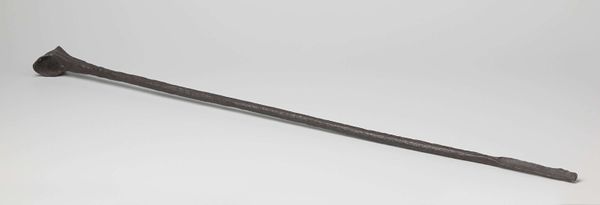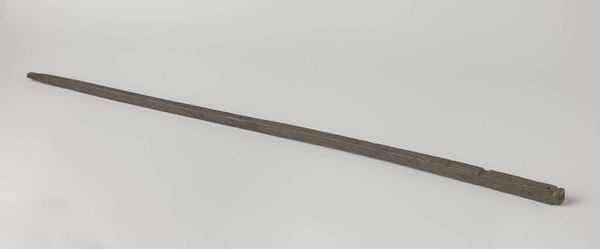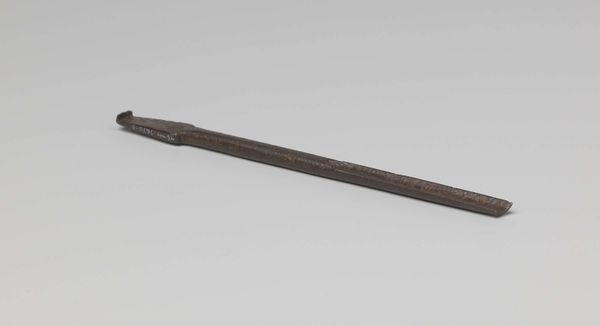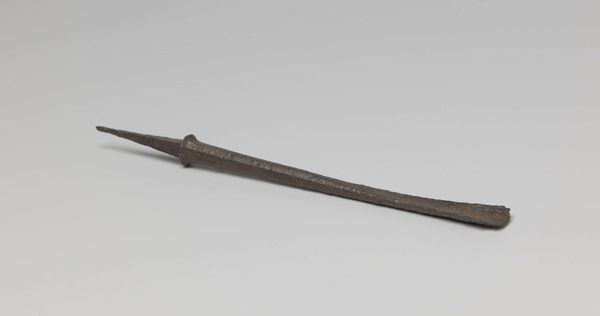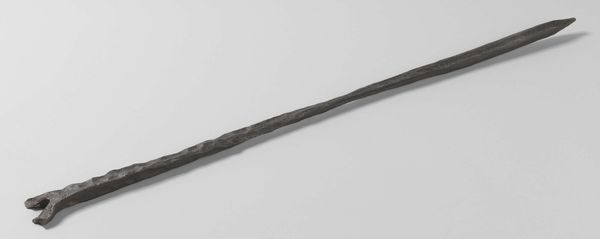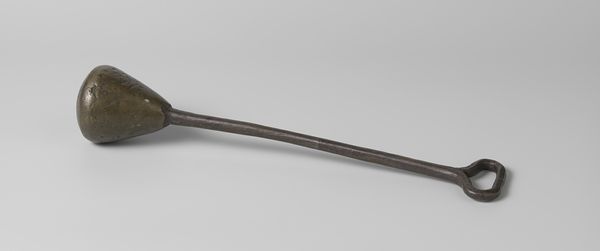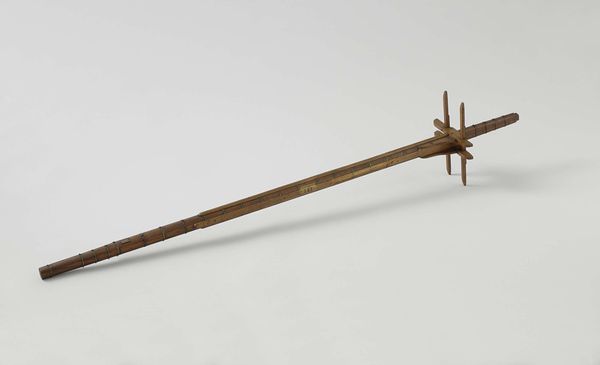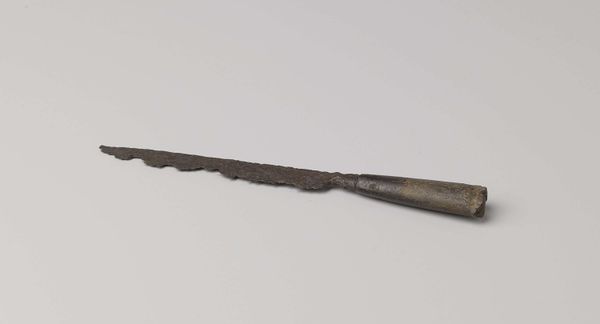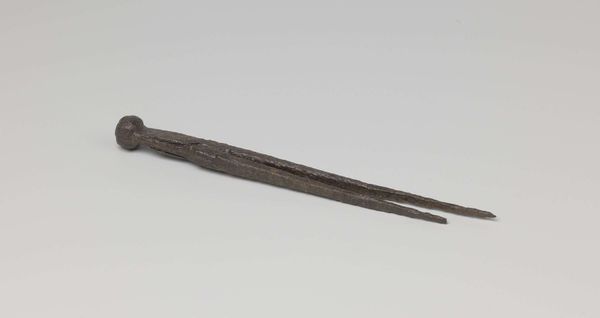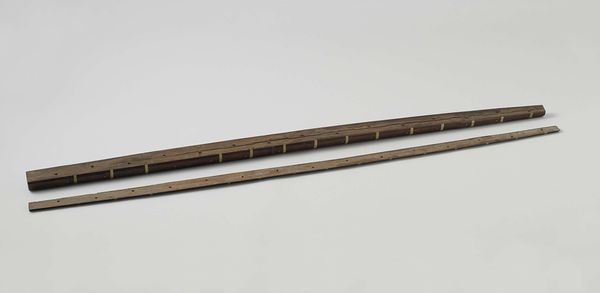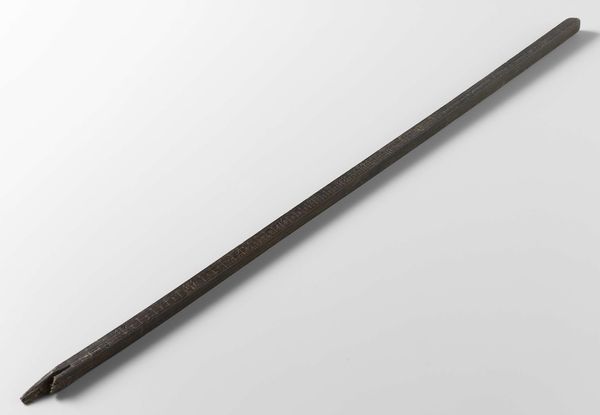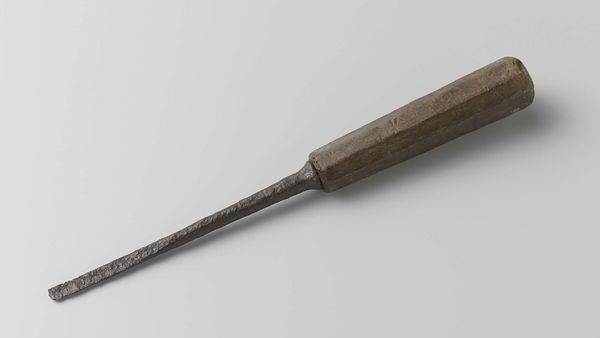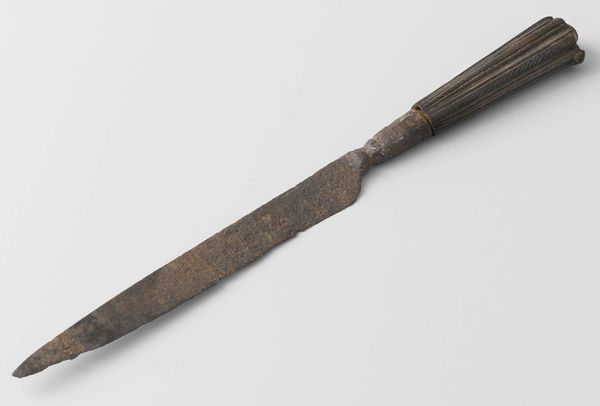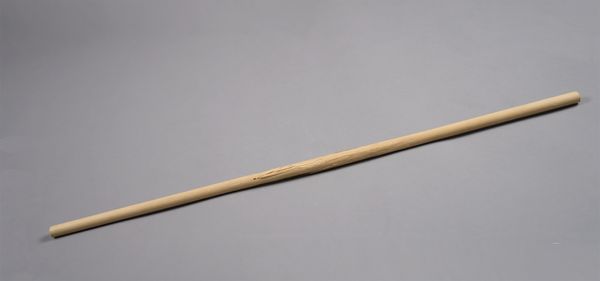
ceramic, sculpture, terracotta
#
ceramic
#
form
#
stoneware
#
sculpture
#
terracotta
#
indigenous-americas
Dimensions: L. 58.4 cm (23 in.)
Copyright: Public Domain
Curator: I'm struck by the understated elegance of this object. Editor: Agreed. It’s surprisingly minimalist for a pipe, which one might typically associate with ornamentation. This "Long-Stem Pipe," made around 200 C.E. by the Colima people, resides here at the Art Institute of Chicago. Curator: Right. The material is ceramic, and it speaks to ideas about social gatherings and perhaps spiritual rituals prevalent in Latin America during that era. One wonders, what specific narratives and social inequalities are subtly present in this design, particularly for the Indigenous populations? Editor: Absolutely, it’s impossible to ignore the historical context. Looking at the form itself, consider how such a long stem affects the smoking experience; it cools the smoke, almost certainly impacting the flavor. It suggests intentional craft, purpose beyond mere function. And it rests upon little legs. It can be placed down, carefully. It's ceramic. Labor intensive to create for simple pleasure. Curator: Exactly. Was this piece destined for an elite class or for ceremonial events? Given the social dynamics of the time, objects often mirrored, or sometimes challenged, hierarchies and gender roles. Is its stark simplicity indicative of deeper cultural meanings related to these issues? How does the maker’s choice of clay—local, readily available—impact its cultural worth? Editor: Thinking of that clay, I'm wondering about its firing. Look at that surface! Were particular fuels favored to get the coloring? I'd like to know more about how ancient materials shaped ancient aesthetic preferences and determined access. How readily could average people command this process and produce useful items? Curator: It’s not just about physical function or firing methods but the stories embedded in its form. Could its plain design possibly signal a quiet resistance to more overt symbols of power or is it an embodiment of distinct societal values which don’t equate ornamentation to wealth or value? How does its existence within The Art Institute transform or perhaps dilute these implications, making them almost… inaccessible? Editor: Well, one thing’s clear: the materials tell only half the story. It's fascinating to realize how this ceramic form links social practices, materials, and symbolic significance so intimately. Curator: Indeed. Analyzing how such an item connects to contemporary social theory provides us not only with historical understanding but allows for a better appreciation of shared global concerns through the prism of the Americas.
Comments
No comments
Be the first to comment and join the conversation on the ultimate creative platform.
